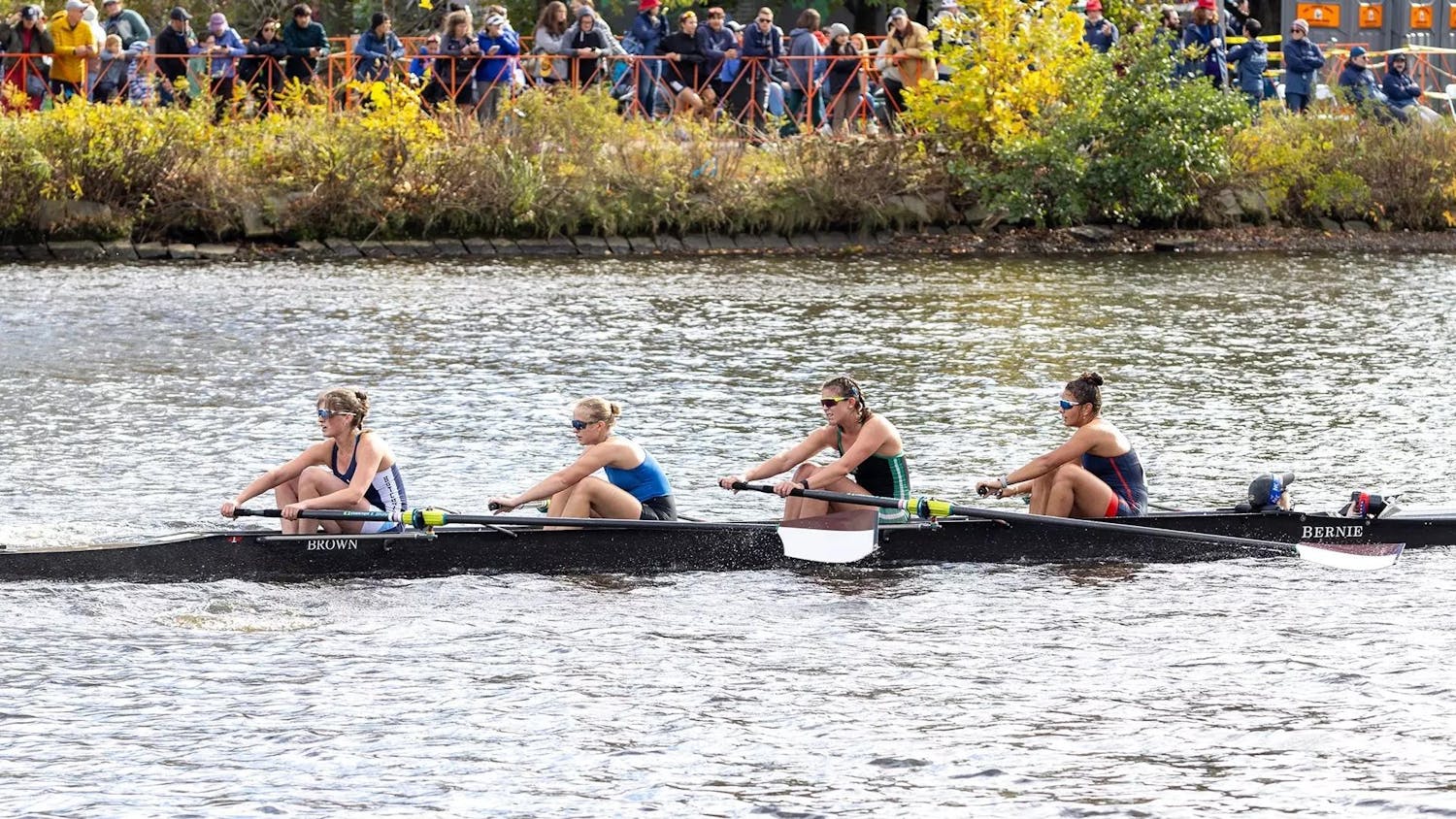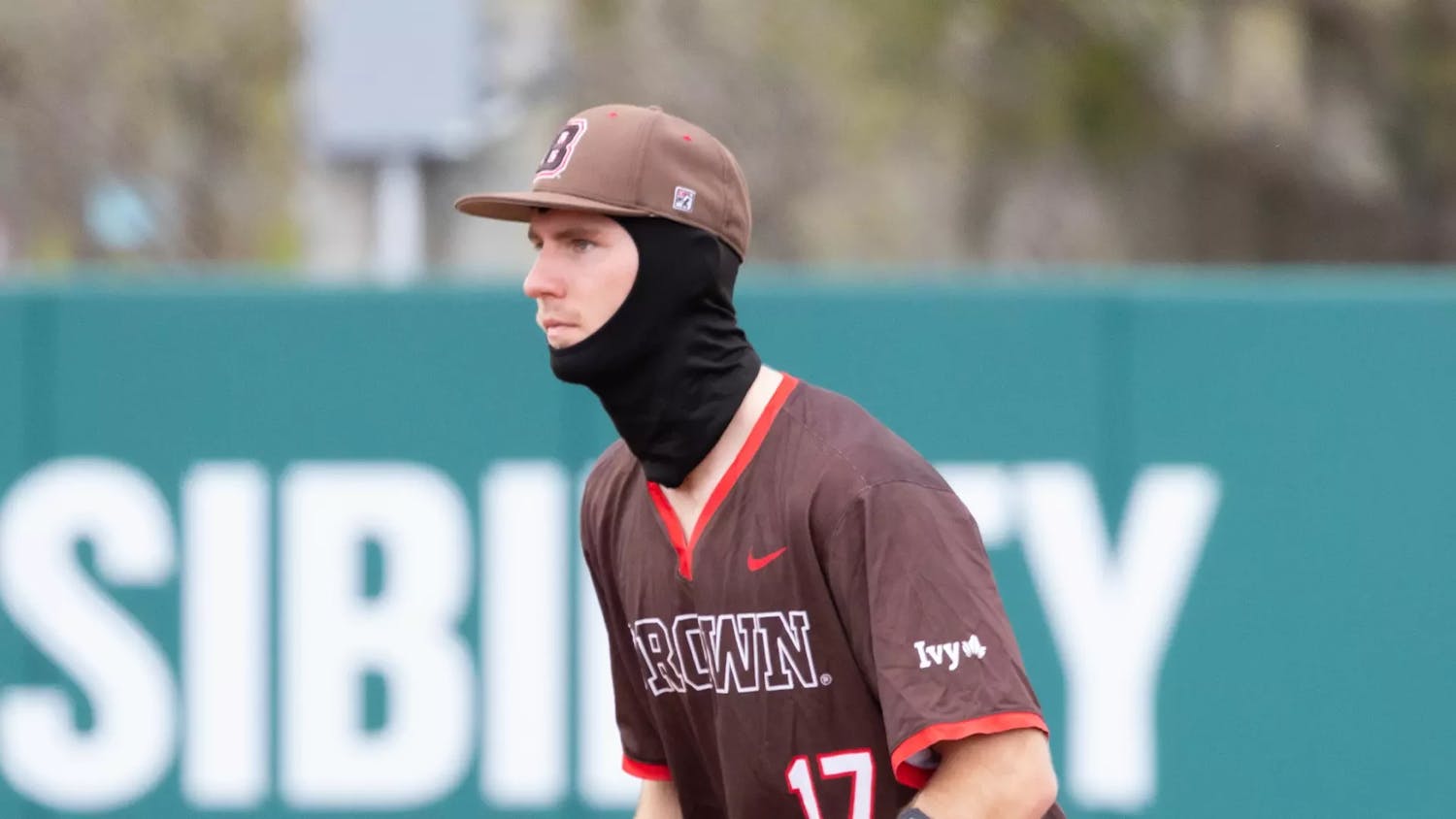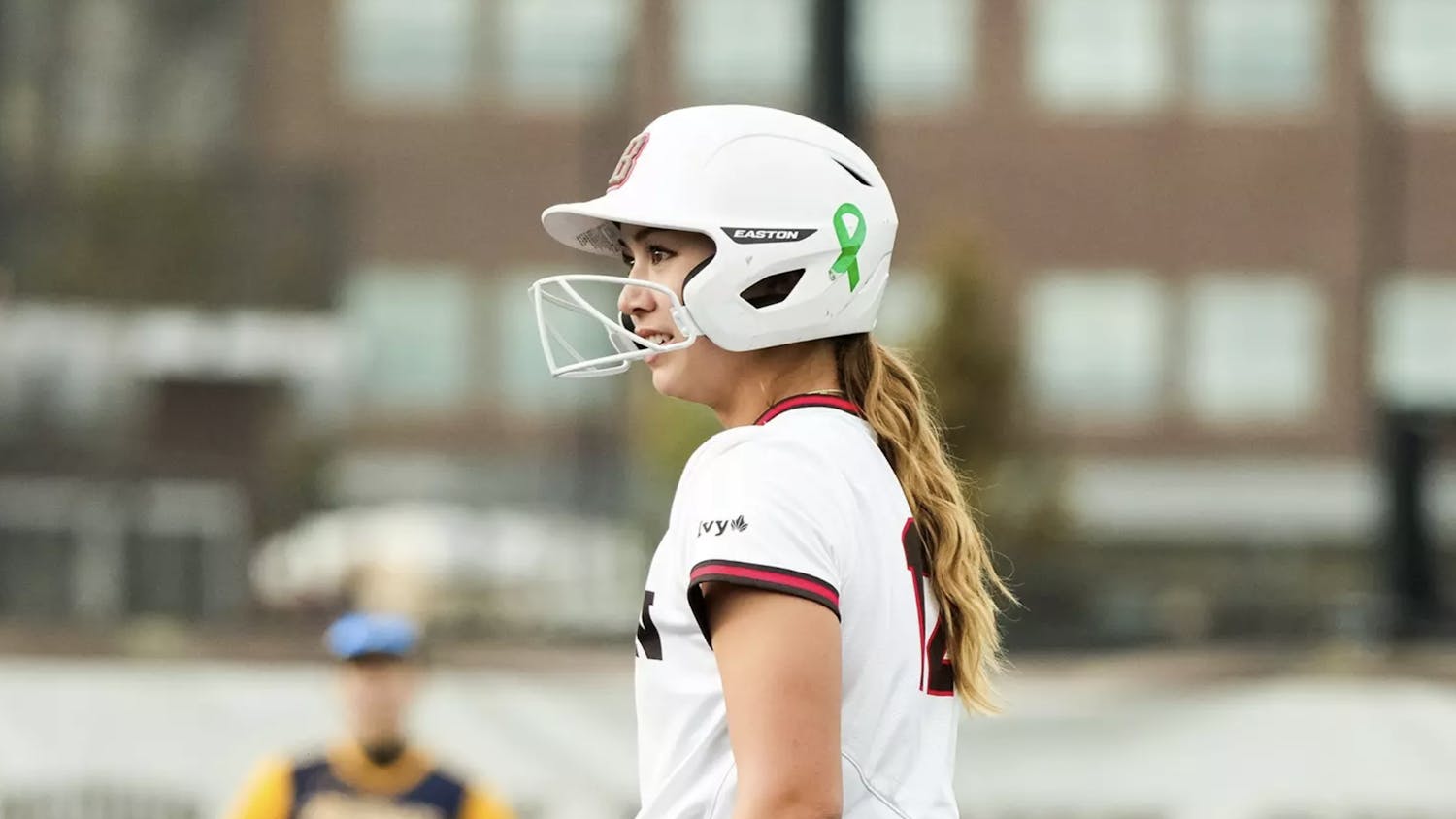This story is the third in a three-part series about Brown athletics.
For athletes who spend much of their childhood and high school years dedicated to a sport, reaching the Division I level is often the ultimate goal. Each athlete takes a different path to the highest level of collegiate competition, but at the heart of the journey lies years of hard work and a passion for their sport. But a number of passionate athletes who enter Brown as first-years may experience situations that drain them of this passion and drive them to quit the sport they’ve played all their lives.
At Brown, about 30 percent of athletes choose not to continue playing their sport through their senior year, according to Director of Athletics Jack Hayes. To put this in perspective, out of a typical class of about 260 first-year athletes entering the school, including both recruits and walk-ons, nearly 80 will quit before their senior year.
While many factors typically go into such a difficult decision, there are certain noticeable trends that may explain why such a large percentage of athletes at Brown decide to quit.
A revolving door
Of the 16 team sports at Brown, 10 have coaches who were hired in 2010 or after. Coaching turnover can cause friction for a team and influence athletes to eventually quit, said Hilary Levey Friedman, visiting assistant professor of American studies, who teaches AMST 1600: “Sports in American Society”.
“When a coach who recruits a particular class leaves, often a lot of those athletes leave the sport,” she said. “They don’t have that connection to the new coach, or the new coach’s recruits get more playing time.”
Such was the experience of one female varsity athlete, who wished to remain anonymous for fear of personal repercussions. She made the decision to quit after a divide surfaced between new players recruited by the team’s new head coach and older players brought in by the former coach.
“It didn’t really start off like, ‘oh, we hate (the new recruits),’ but it kind of got to the point where we saw the favoritism emerging,” she said.
Another player — also choosing to remain anonymous for fear of personal repercussions — who also left a team said her new coach’s efforts to get to know players that were already part of the program seemed forced, weakening the already limited connection between the new coach and the established players.
Hayes recognized that coaching turnover opens up the possibility that more athletes will choose to leave the program. “When there’s coaching changes, students may look at the program differently under a new coach than they did under the previous coach,” he said.
For losing teams that experience this change, the contentious relationship between coaches, new players and older players tends to take its toll on the chemistry and performance.
“It started from the coaching, down to the players — that divide we were talking about showed itself,” the first player said. “We just didn’t mesh as a group.”
“Never once had we just banded together and pulled through a game,” she added. “We were never able to push through a win because that’s where chemistry comes in.”
A ‘losing atmosphere’
Micaela Ross ’16 had lost plenty of games growing up. A Texas native, Ross played goalie for the only female hockey team in her age group in the entire state, which meant that most of her games were against male counterparts. But she never considered quitting just because her teams were losing.
Ross successfully followed in the footsteps of her two older brothers and signed to play Division I hockey, something she said she worked her entire life to accomplish.
Ross came to Brown as part of a seven-member class of women’s hockey recruits in fall 2012, but just three of those players — not including Ross — were still with the program for the 2015-2016 season. With just three seniors, the Bears won only three games and had the second-smallest roster in the Ivy League.
Many things weighed on Ross when making the decision to quit, including the guilt of leaving behind her teammates and giving up a position she had worked so hard for. She also recognized that so many others who were not recruited would have loved the chance to be in her shoes. But the situation worsened to the point where, in fall 2014, she decided to quit the sport she had played since she was six years old.
The two teams Ross played on at Brown went 6-20-1 and 4-20-5, but it was not just the team’s record that drove her away from the ice. It was a mix of the losing, displeasure with her coach and an overwhelming sense of defeat that influenced her decision.
“It was different at Brown because not only were we losing all the time, but we had this losing atmosphere. People were just going through the motions,” she said. “There was such little morale, so on top of that, to be losing all the time — all of these things were coming together to make it not a good situation.”
For Ross, there was never a new coach to get used to, but there was enough discontent among players with the existing coach that it actually served as a bonding force for the team.
“Your teammates are your anchor at Brown,” she said. “A lot of us were having a pretty tough time. You get really tight with everyone, and rely on people more than when things are going right.”
The gender divide
For Brown’s teams, where retention rate is low across the board, quitting seems to be even more prevalent among women’s teams. Brown softball has just one senior this year after bringing in a class of seven in 2012. In 2015, former players accused Head Coach Katie Flynn of bullying. The alleged incidents took place in 2014, when Flynn was a new coach presiding over a team of her predecessor’s recruits. Along with women’s hockey and softball, women’s lacrosse and women’s soccer have seen more athletes quit than their male counterpart teams.
Ross said that male and female athletes may react differently towards teammates who quit, noting that she still remains friends and roommates with some of her former teammates and even younger members of the team as well.
Without prominent professional leagues for women’s sports in the United States, female athletes may also struggle with not seeing any sort of future in their sport.
“College is like the pinnacle of women’s ice hockey,” Ross said. “It’s hard when you’re sacrificing 35 hours of your week to this sport, but also if you’re unhappy playing it and there’s no future for it after college, it feels like it’s just harming you in a way.”
One of the aforementioned varsity athletes said that coaches also may not understand that players’ foremost goal at school is to end up with a career after graduation, which is especially true for women whose opportunities in professional sports are limited.
“They don’t have an appreciation for going from college to the workforce,” she said. “That’s what most of us are doing. We’re not going to go to the (pros).”
Outside of sports
The Ivy League also creates a greater pull for athletes away from their sport. Without athletic scholarships, athletes don’t face the choice of remaining unhappy on a team or quitting and losing scholarship money.
“Even if you earned your spot partially because of your athletic performance, that spot cannot be taken away, and your financial aid cannot be taken away” from you if you quit, Friedman said. “One of the beauties of the Ivy League is that once you’re in, you’re in.”
The other non-sport opportunities — which athletes are typically too busy to take advantage of — also become more attractive as their athletic situation worsens.
“I can understand if someone chooses not to participate anymore because they choose to do something else,” Hayes said. “We’re at an institution where there’s a lot of things to pursue. There’s a lot of things that would be of interest to students.”
“When I was playing and I knew I was going to play in college, I knew I wasn’t going to do those things, but I was okay with that,” said another former athlete, who wished to remain anonymous for fear of personal repercussions. She plans to study abroad in the future, which she could not have done if she had remained on her team. “If it was fine, if I was having fun, then I would have stayed — there wasn’t that pull,” she added.
Ross, who also studied abroad after leaving the team, said she has since found her passions and has become more well-rounded academically.
“It’s hard at Ivies when there’s no money tying you to it, and there are so many amazing opportunities to do research or get a sweet internship,” she said. “If you are unhappy and there’s no future for you after college in your sport, it becomes like ‘what am I doing? I’m unhappy, and I’m closing off opportunities for myself.’”




